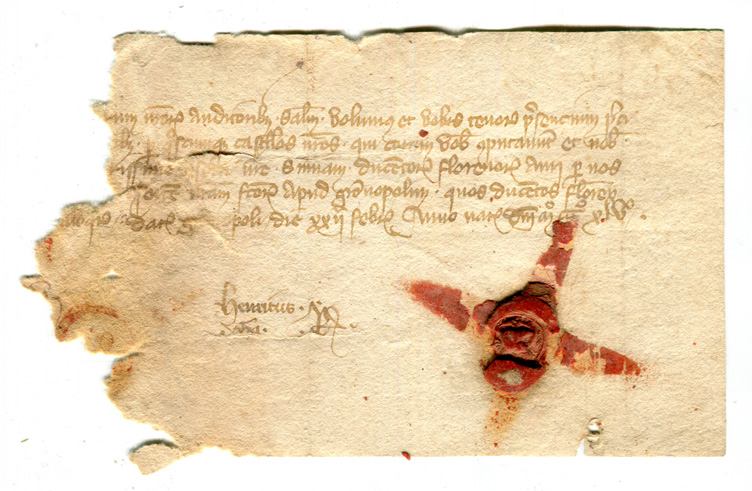David W. Sorenson
(Alan G. Berman, Numismatist)
“A Strange Seal from Grenoble from 1346, or
Headbinding in France: Carryover and/or Forerunner in Toulouse?”
Abstract of Paper
Intended To be presented at the 55th International Congress on Medieval Studies [CANCELLED]
(Kalamazoo, 2020)
Rescheduled for the 56th International Congress on Medieval Studies
(Kalamazoo, 2021)
Session I of II on
“Seal the Real: Documentary Records, Seals, and Authentications”
Part I: “Signed & Sealed”
Sponsored by the Research Group on Manuscript Evidence
Organized by Mildred Budny
2020 Congress Program
2021 Congress Program Planning
[Published on 10 March 2020, with an Update on 17 March 2020 reporting the Cancellation of the Congress as a whole,
and with an Update on 19 November reporting the Rescheduling for the 2021 Congress]
*****
Abstract
One of the benefits of studying hitherto un-studied source documents, even trivial ones, and moreover ones selected for mundane reasons, is the distinct possibility of opening up a whole new by-way of information shedding light on dark corners of history. The document in question is a receipt, on paper, which the author purchased as a specimen of mid-fourteenth century paper. It appears to be about half of a receipt for a payment of 200 florins for feudal dues, dated at Grenoble on 22 February (before Easter), 1345, viz. 1346.

Document from Grenoble dated 22 February 1345 (Old Style), with wax seal.
The document has a nearly complete wax seal of an official, one Henricus Ioha(?). It features a bearded male head in profile,

Seal on a Document from Grenoble of 22 February 1345 (Old Style).
accompanied by some strange animals: a goose(?) seized by a lion extending from the man’s neck, and a lizard; and by a flamboyant plume above the head. The plume may be from a helmet, but if so it cannot be distinguished from the head.
What is immediately obvious from the general appearance is that the head is almost absurdly elongated. It is in fact well within the normal range of shapes of artificially deformed heads, perhaps best known from Peru, but also typical of the upper nobility among the steppe tribes of western Asia, many of which participated in the various late-antique invasions of the Roman empire, as well as the “Migration Period” which followed.
Might this head-binding, and that more familiar sort practiced almost within living memory among the peasants around Toulouse, be survivals of this steppe-horseman tribal culture? Perhaps it was a holdover from, say, Avars captured by Charlemagne and settled within his empire? This paper attempts to look at other possible examples of this sort of artificial deformation in southern France, and to consider whether we can determine anything useful from what evidence turns up.
*****
We thank David Sorenson for his multiple contributions to Research Group events over the years.
They include Papers for our Congress Sessions in
and for our Symposia in
[Update: David’s Abstract in the 2020 Symposium Booklet 2020 Symposium Booklet has been expanded to a Draft Paper for Feedback:
- “A Quick Introduction to Indian Manuscripts for the Non-Specialist”, with examples and illustrations, available as a download here
Another of David’s conference papers (for the 24th Annual Conference of the World History Association in Boston in 2017) is ready in revised form, with illustrations, as a Draft for Comment:
- “Paper-Moulds and Paper Traditions” (2020), available here.]
*****
